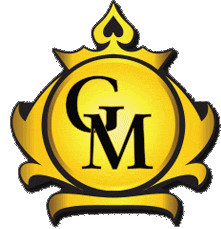Vegas Strip Blackjack Overview
The exciting 4-deck variation of the all-time favorite boasts an impressive RTP of 99.65% and has its own peculiarities in terms of rules. With no side bets or multi-hand options, its logic is quite straightforward. At the same time, there are specific subtleties.
For instance, unlike the classic version, the dealer stands on all 17 – both hard and soft. At the same time, re-splitting is perfectly okay, which is another notable difference. Here is an overview of the look, the rules, and the payouts of the Vegas edition.
Layout and Rules
Generally, classic rules apply. The decks are reshuffled between the rounds. Like elsewhere, you should try to beat the dealer’s hand without exceeding 21. You are not going to spot any differences in the layout, dealing scheme or game terminology either. The devil, however, is in the details.
If you are already familiar with the American variation, you are sure to notice similarities immediately. While European blackjack gives the dealer just one card before players make their first moves, the American and the Vegas versions are ‘hole card’ games. This means the dealer is dealt a pair of cards – one face up and one face down. The latter is termed ‘hole card’. If this is either a 10 or an Ace, the dealer is allowed to peek, and the game will end immediately if they have blackjack on their hands.
Otherwise, you have a choice between the same basic moves: hitting, standing, splitting, doubling down or protecting your wager with an insurance bet. Splitting is where important distinctions become immediately obvious. While other versions limit it to pairs of identical cards (e.g., 2-2), the Vegas edition focuses on value only. Thus, since all face cards are equal in terms of their worth, splitting a Jack and a 10, or a King and a Queen is acceptable.
- Repetitive splitting is permitted, which gives up to 4 hands in a single game. Splitting of Aces, however, may only be done once. When making the move, just one card may be taken. If you hit 21 in this situation, this does not qualify as a blackjack.
- The dealer will only stand on 17 if it is soft (i.e., the hand includes an Ace that works as an 11-point card). Some other variations allow them to stand on both soft and hard combinations of this value.
- Doubling down is allowed for any first two cards, and it may also be done after splitting. While it boosts your wager size, it leaves you with a single final hit. Surrendering, however, is prohibited.
Payout Ratios
The game boasts an excellent payout rating. Even though you may encounter tables with a 6:5 payout ratio, these are best avoided. Stick to the 3:2 proportion standard for the game. The insurance bet ramps this up to 2:1, and a regular winning hand results in 1:1 winnings.
If you and the dealer happen to have equal total hand values, no money will be won or lost – the outcome is viewed as “push”, and the bet is returned. Finally, when the dealer goes over 21, this translates into a classic automatic victory for a player.
How to Win
There are several courses of action, each giving preferred steps in any individual situation. For instance, if the dealer gets 10 as their face-up card, while your hand totals 15, hitting is recommended. If you have played blackjack before, developing your own strategy for the Vegas table is easier. We recommend that you start in the demo mode to practice safely.









